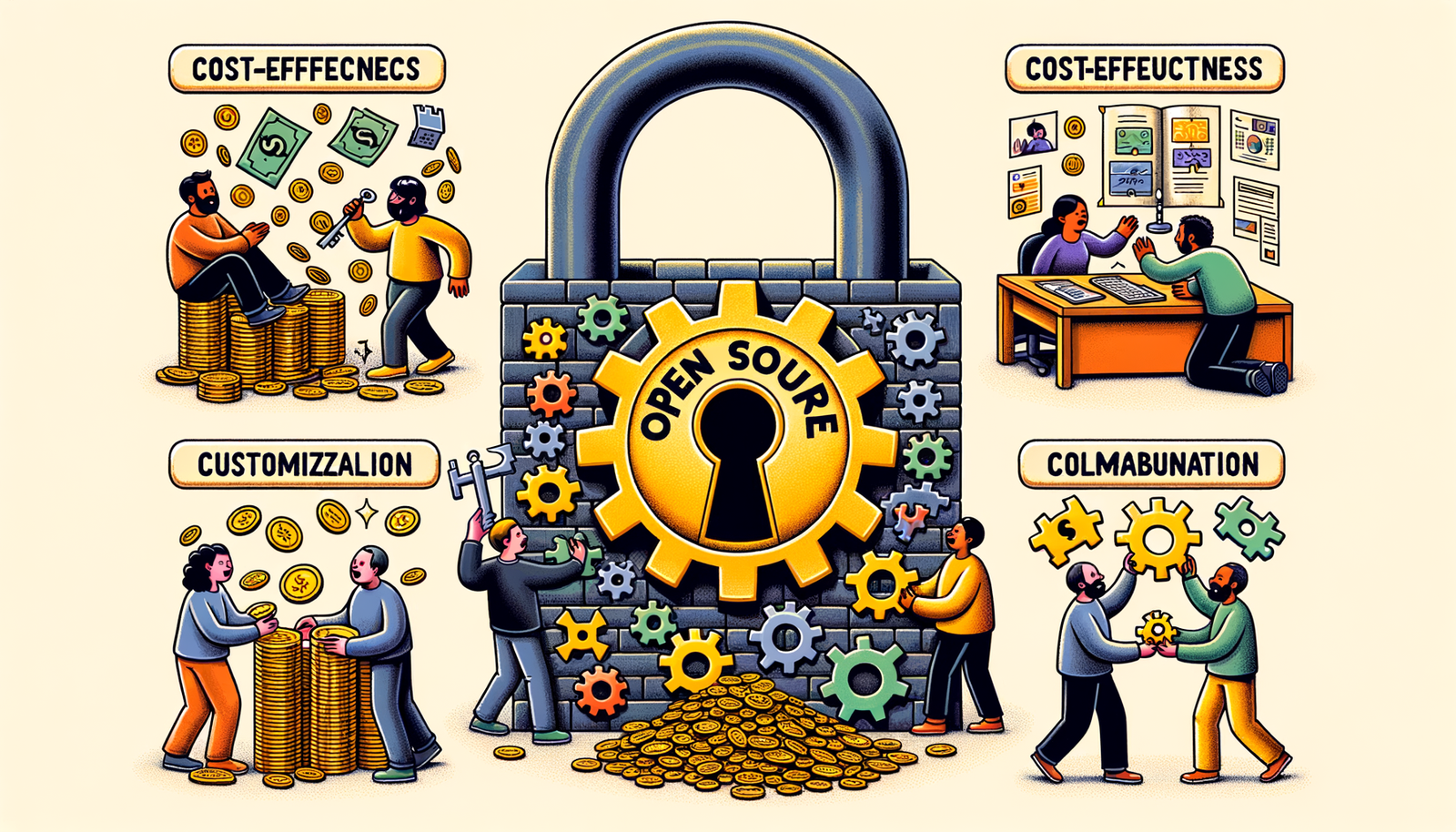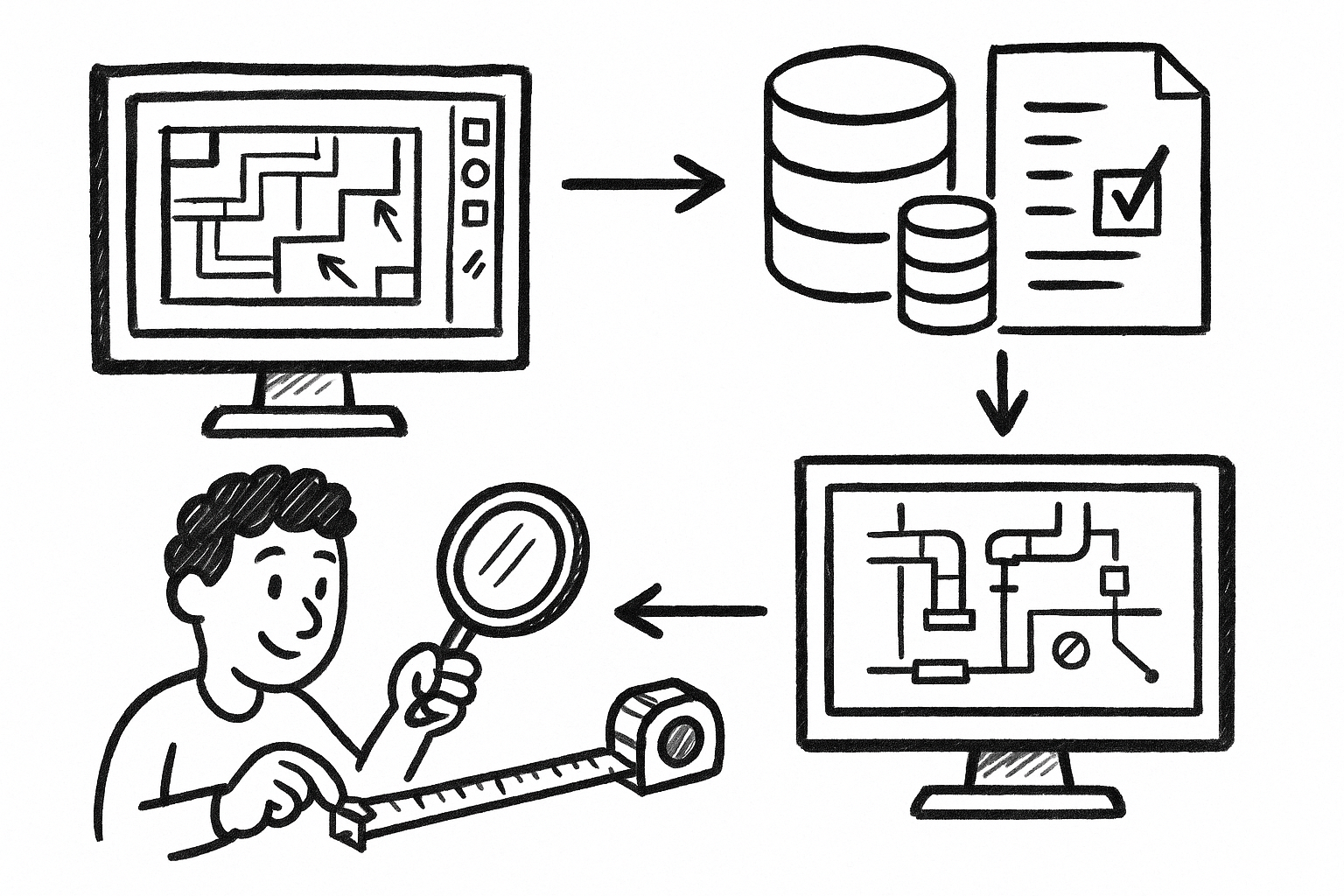Your Cart is Empty
Customer Testimonials
-
"Great customer service. The folks at Novedge were super helpful in navigating a somewhat complicated order including software upgrades and serial numbers in various stages of inactivity. They were friendly and helpful throughout the process.."
Ruben Ruckmark
"Quick & very helpful. We have been using Novedge for years and are very happy with their quick service when we need to make a purchase and excellent support resolving any issues."
Will Woodson
"Scott is the best. He reminds me about subscriptions dates, guides me in the correct direction for updates. He always responds promptly to me. He is literally the reason I continue to work with Novedge and will do so in the future."
Edward Mchugh
"Calvin Lok is “the man”. After my purchase of Sketchup 2021, he called me and provided step-by-step instructions to ease me through difficulties I was having with the setup of my new software."
Mike Borzage
Unlocking the Potential of Open-Source Design Software: Cost-Effectiveness, Customization, and Community Collaboration
September 09, 2024 4 min read


Introduction to Open-Source Design Software
Open-source design software refers to tools and applications that are freely available for use, modification, and distribution. The source code of such software is accessible to anyone, allowing for a high degree of customization and community participation. The concept of open-source software has its roots in the early days of computing, but it truly began to gain momentum in the late 20th century, particularly with the rise of collaborative software development projects facilitated by the internet.
Over the years, open-source design software has evolved significantly. Initially, it was perceived as a niche solution primarily suited for hobbyists and academic purposes. However, advancements in software development, coupled with a growing community of contributors, have elevated these tools to mainstream use. Today, they rival proprietary software in terms of functionality and user experience.
Popular Open-Source Design Tools
Several open-source design tools have gained popularity due to their robust features and active communities. Some of the most notable include:
- Blender: A powerful 3D creation suite that supports the entire 3D pipeline, including modeling, sculpting, animation, simulation, rendering, compositing, and motion tracking.
- Inkscape: A versatile vector graphics editor used for creating illustrations, icons, logos, diagrams, maps, and web graphics.
- LibreCAD: An open-source 2D CAD application used for creating technical drawings and schematics.
These tools boast a range of key features that cater to the needs of designers across various disciplines. Blender, for instance, supports advanced rendering techniques and offers a comprehensive set of sculpting tools. Inkscape provides a wide array of drawing tools and supports multiple file formats, making it highly versatile for graphic design projects. LibreCAD is known for its user-friendly interface and extensive library of plugins and add-ons, which enhance its functionality.
Advantages of Open-Source Design Software
Adopting open-source design software offers several distinct advantages:
Cost-Effectiveness
One of the most significant benefits of open-source design software is its cost-effectiveness. Unlike proprietary software, which often requires expensive licensing fees, open-source tools are typically free to use. This makes them an attractive option for startups, freelancers, and educational institutions that may have limited budgets.
- Savings on licensing fees allow organizations to allocate resources to other critical areas, such as hardware upgrades or training programs.
- The accessibility of open-source software democratizes design, enabling more individuals and small businesses to participate in the industry.
Customization and Flexibility
Open-source design software is highly customizable, allowing users to modify the source code to fit their specific needs. This level of flexibility is rarely available with proprietary software, which is typically closed-source and limited in terms of customization options.
- Users can tailor the software to their workflows, enhancing efficiency and productivity.
- Community-driven development ensures continuous improvement and the addition of new features based on user feedback.
Collaboration and Community Support
The collaborative nature of open-source software development fosters a vibrant community of developers and designers. This global network of contributors continuously works on improving the software, fixing bugs, and adding new features.
- Access to a wealth of shared resources, including tutorials, forums, and documentation, facilitates learning and problem-solving.
- Community support ensures that users can seek help and advice from experienced professionals, fostering a collaborative learning environment.
Challenges and Considerations
Despite the numerous advantages, there are certain challenges and considerations associated with using open-source design software:
Technical Challenges
While open-source software is highly customizable, it can also pose technical challenges for users, particularly those who are not familiar with programming or software development.
- There may be a steeper learning curve compared to proprietary software, which often comes with dedicated customer support and extensive documentation.
- Compatibility issues may arise when integrating open-source tools with proprietary software or existing workflows.
Security and Reliability
There are common misconceptions about the security of open-source software. Some users may believe that because the source code is publicly available, it is more vulnerable to security threats. However, the reality is that open-source software can be just as secure, if not more so, than proprietary software.
- The transparency of open-source software allows for thorough peer review and auditing, leading to the identification and resolution of security vulnerabilities.
- Measures such as regular updates, patches, and the use of security-focused add-ons can enhance the reliability and stability of open-source software in production environments.
Adoption Barriers
Resistance to change can be a significant barrier to the adoption of open-source design software, particularly in organizations that have long relied on proprietary solutions.
- Overcoming this resistance requires a strategic approach, including demonstrating the benefits of open-source tools and providing training and support to ease the transition.
- Integrating open-source software into existing workflows may require adjustments and adaptations, but with proper planning and execution, it can be a seamless process.
Future Trends and Case Studies
Emerging Trends in Open-Source Design Software
The landscape of open-source design software is continuously evolving, with several emerging trends shaping its future:
- The growth of hybrid models that combine open-source and proprietary features is becoming more prevalent. These models leverage the strengths of both approaches, offering users greater flexibility and choice.
- Increased collaboration between open-source communities and large enterprises is driving innovation and enhancing the capabilities of open-source tools. This collaboration fosters a symbiotic relationship where both parties benefit from shared knowledge and resources.
Case Studies
Various companies and projects have successfully integrated open-source design software into their workflows. These success stories highlight the practical benefits and potential of open-source tools in real-world applications. By examining these case studies, organizations can gain valuable insights and learn best practices for implementing open-source solutions.
Conclusion
Open-source design software offers numerous benefits, including cost-effectiveness, customization, and robust community support. While there are challenges to consider, such as technical complexities and adoption barriers, the potential advantages far outweigh the drawbacks. As the landscape continues to evolve, with hybrid models and increased collaboration driving innovation, the future of open-source design software looks promising. Designers and organizations are encouraged to explore and adopt these solutions to enhance their workflows and drive creativity and innovation in their projects.
Also in Design News

From Markups to Data: Governed Custom Measurements for Audit-Ready MEP Takeoffs in Revu
December 28, 2025 8 min read
Read More
Rhino 3D Tip: Manufacturing-Ready STEP and IGES Export Checklist for Rhino
December 27, 2025 2 min read
Read More
Design Software History: From Interchangeability to Semantic PMI: A History of Tolerancing in CAD
December 27, 2025 12 min read
Read MoreSubscribe
Sign up to get the latest on sales, new releases and more …


